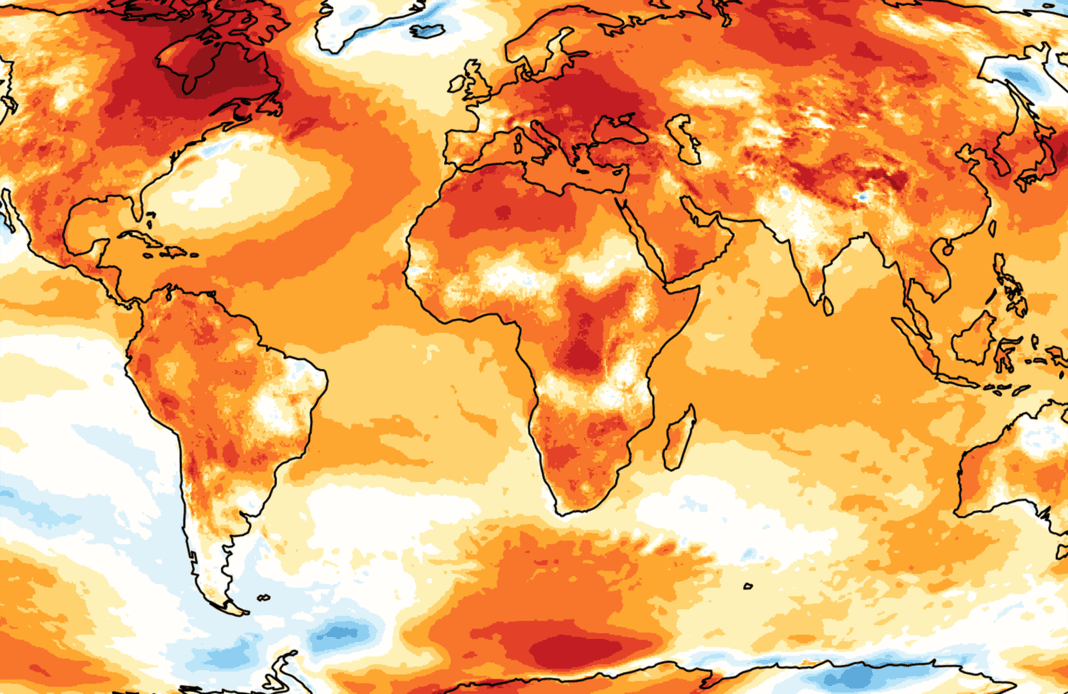Guwahati, Jan 12: The World Meteorological Organization (WMO) has confirmed that 2024 is the warmest year on record, based on an analysis of six international datasets. This milestone marks a continuation of an extraordinary streak, with the past ten years all ranking among the Top Ten warmest years globally.
According to WMO’s consolidated analysis, the global average surface temperature in 2024 was 1.55 °C (with a margin of uncertainty of ± 0.13 °C) above the 1850-1900 average. This indicates that 2024 is likely the first calendar year where the global mean temperature has exceeded 1.5°C above pre-industrial levels, a critical benchmark in global climate discussions.
A Call for Urgent Action
“The assessment from the World Meteorological Organization (WMO) proves yet again – global heating is a cold, hard fact,” said United Nations Secretary-General António Guterres.
“Individual years pushing past the 1.5-degree limit does not mean the long-term goal is shot. It means we need to fight even harder to get on track. Blazing temperatures in 2024 require trail-blazing climate action in 2025,” he emphasized. “There’s still time to avoid the worst of climate catastrophe. But leaders must act – now.”
The WMO’s temperature assessment draws on multiple sources of data, including contributions from the European Center for Medium-Range Weather Forecasts (ECMWF), Japan Meteorological Agency, NASA, the US National Oceanic and Atmospheric Administration (NOAA), the UK’s Met Office in collaboration with the Climatic Research Unit at the University of East Anglia (HadCRUT), and Berkeley Earth. These datasets form the backbone of international climate monitoring and provide crucial information for the UN Climate Change negotiations.
The Decade of Record-Breaking Heat
“Climate history is playing out before our eyes. We’ve had not just one or two record-breaking years, but a full ten-year series. This has been accompanied by devastating and extreme weather, rising sea levels, and melting ice, all powered by record-breaking greenhouse gas levels due to human activities,” said WMO Secretary-General Celeste Saulo.
Saulo emphasized that while a single year exceeding the 1.5°C threshold does not equate to failing the Paris Agreement’s long-term goals, it underscores the urgent need to limit warming to below 1.5°C over decades. “Every fraction of a degree of warming matters. Whether it is at a level below or above 1.5°C, every additional increment of global warming increases the impacts on our lives, economies, and our planet,” she stated.
The Ocean’s Role in Record Heat
A separate study published in Advances in Atmospheric Sciences identified ocean warming as a key driver of 2024’s record-breaking temperatures. The ocean, which stores about 90% of the excess heat from global warming, reached its highest heat content ever recorded—both at the surface and for the upper 2000 meters.
“From 2023 to 2024, the global upper 2000 m ocean heat content increased by 16 petajoules, roughly 140 times the world’s total electricity generation in 2023,” noted Prof. Lijing Cheng from the Institute of Atmospheric Physics at the Chinese Academy of Sciences. This finding, based on data from 54 scientists across seven countries and 31 institutions, highlights the ocean’s critical role as an indicator of climate change.
A Unified Response to Exceptional Conditions
The timing of the release of the six temperature datasets was coordinated across institutions to underline the exceptional climate conditions experienced in 2024. While methodologies vary slightly, all datasets agree that 2024 is the warmest year on record and highlight the accelerating pace of global warming.
The findings add urgency to global climate action. As the WMO’s Saulo noted, “This year’s data is a stark reminder that addressing climate change is not just a necessity; it’s an obligation for the survival of future generations.”




